Chinese New Year has arrived and as London celebrates the Year of the Dog with the biggest Chinese New Year celebrations outside of Asia, my thoughts turned to this city’s longstanding love affair with man’s best friend, the dog.
There’s a lot of puppy love in the Great British capital – a phenomenal 200,000 dogs and counting call London home. That’s almost twice the size of the population of Reykjavik! London has a lot to offer the travelling cynophilist, the technical term for a dog lover. From relaxing doga sessions (that’s dog yoga to you and me!) to doggie-friendly cinema nights, London has truly gone to the dogs. The Big Smoke is also home to one of the oldest and quite possibly, most well-known animal sanctuaries in the world – Battersea Dogs & Cats Home. Dog lovers should make a visit to this venerable institution where you can see the great work being done by the staff who rescue and care for around 7,000 dogs and cats in need of help every year, with the ultimate aim that a new, loving home can eventually be found for them.
Anyone on holiday in London and missing their beloved Rover, Rex, or Fido will find doggie comfort in the fact that you are never really that far from a pooch, and when you’re here you’ll no doubt encounter your fair share of pugs, poodles, and Pomeranians making the most of London’s famous Royal Parks as you will beagles, boxers and bulldogs in the many dog-friendly pubs all over the capital. But, in this dog-eat-dog world, there are some London canines who are simply ahead of the pack. Here follows a list of 6 of London’s top dogs, past and present from the famous to the downright infamous:
1. The Queen’s Corgis
At number one, it’s probably the most well-known and pampered set of pooches of them all, the Queen’s corgis! It is said that the Queen has owned more than 30 of them over the years with the signature dogs now as synonymous with the monarch as the Crown Jewels. Lately, there has been a resurgence of interest in the breed, according to The Kennel Club and this is largely down to the recent success of the critically acclaimed Netflix drama series The Crown, which features scenes showing a young Queen Elizabeth II surrounded by yelping corgis.
The Queen currently owns two corgis, Willow and Whisper, the latter having been adopted in 2017. She also has two adorable dorgis (corgi-dachshund mixes) Candy and Vulcan who, in 2016, the monarch appeared with in a photograph taken at Windsor Castle to mark her 90th birthday. Also in the picture was corgi Holly who passed away later the same year. You may remember Holly and Willow who both starred in the unforgettable James Bond spoof scene of the London 2012 Olympic Opening Ceremony in which secret agent 007, played by Daniel Craig arrives at Buckingham Palace to escort the Queen to the Olympic Stadium by means of helicopter and parachute!
The poshest pooches in all the land certainly live a charmed life, sleeping in wicker baskets elevated off the ground and dining daily on an individually designed menu served by a butler on battered silver and porcelain dishes. They are seldom seen but if you do wish to catch a glimpse of the high-born hounds, at least in sculptural form, visit the Queen Mother Memorial by Paul Day just off the north side of the Mall where you’ll see, amongst others, a panel relief depicting the late Queen Mother sitting with her corgis in the garden of the Castle of May in Caithness.
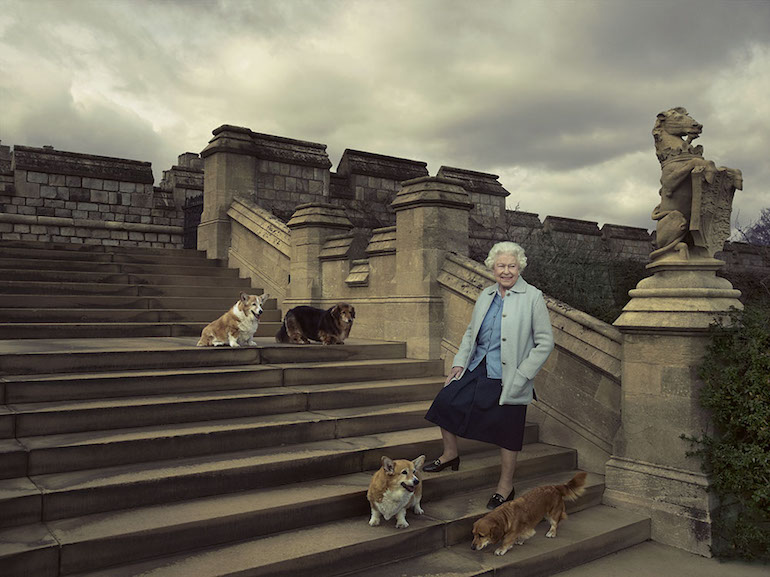 Queen Elizabeth II & corgi dogs at Windsor Castle. Photo Credit: © Royal Trust Collection.
Queen Elizabeth II & corgi dogs at Windsor Castle. Photo Credit: © Royal Trust Collection.
2. Giro the so-called Nazi Dog
Not far from the above-mentioned memorial is one of the more unusual graves in London, that of
Giro – the beloved pet Alsatian, some say terrier, of Leopald von Hoesch, who was German ambassador to the UK in the early to mid-1930s. Giro and Hoesch lived at the German embassy when it was part of the stately Carlton House Terrace, close to the Buckingham Palace and the heart of government. The story goes that Giro died in 1934 after chewing into electric cables at the residence and was buried in the gardens where today you can still find his tombstone nestled surreptitiously behind some metal railings and under a rather large tree just beside the Duke of York steps. The tombstone carries the German inscription “Ein treuer Begleiter!” (A faithful companion) – apparently, Hoesch was deeply devoted to his dog. Just two years later, he too met his end, having suffered a stroke or a heart-attack whilst at breakfast one morning inside the embassy.
So, just how did Giro gain the epithet “the Nazi Dog”? During his tenure as ambassador, Hoesch had been a popular figure and was much admired amongst the ruling classes in Britain, having done much to bolster UK-German relations. Unfortunately, a year after Hoesch took up his post the, Nazi party had swept into power in Germany and by proxy, he found himself as the representative in Britain, of their new totalitarian regime.
It is said that Hoesch had no sympathy for the Nazi party and it is quite possible that the strain of trying to maintain relations between the two countries, which were being brutally tested by the new ruling party may have hastened his demise. It’s quite hard to imagine it, but Hoesch received a full Nazi funeral in London; his coffin was draped in the Nazi swastika flag and was led by a cortege of Grenadier Guards through the capital’s streets and onwards to Dover on the English south coast from where he was taken via ship back to Germany.
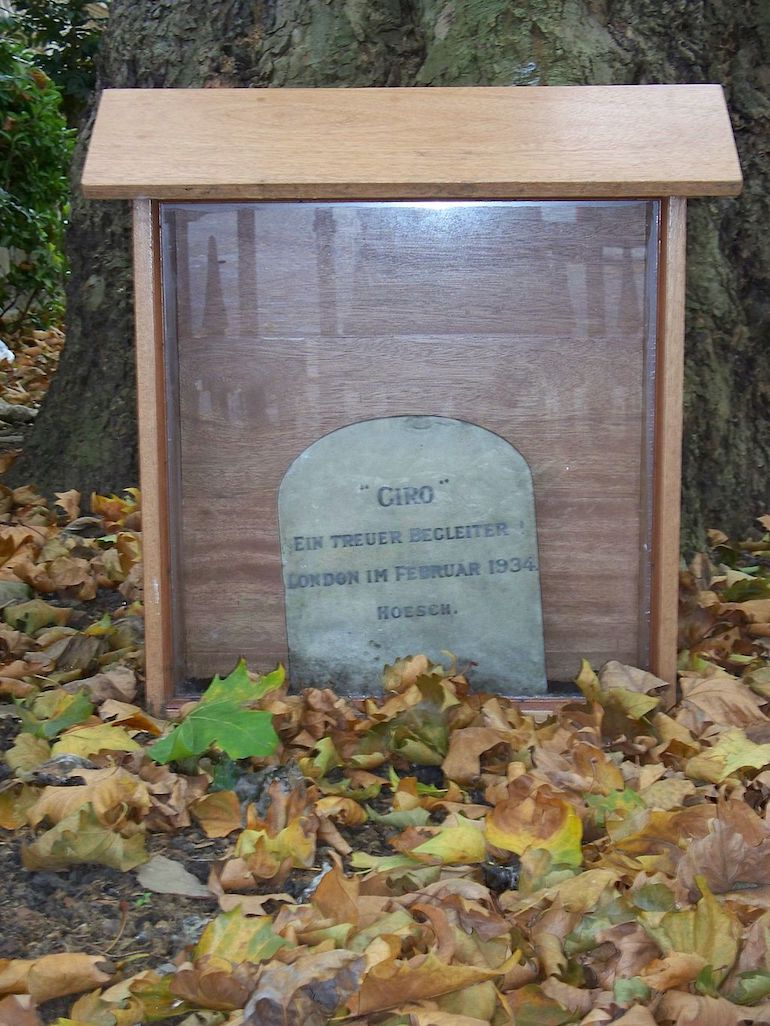 Grave in London for Giro the so-called Nazi Dog. Photo Credit: © Iridescenti via Wikimedia Commons.
Grave in London for Giro the so-called Nazi Dog. Photo Credit: © Iridescenti via Wikimedia Commons.
3. Trump
Yes, you read it right. Trump was the beloved pet pug of renowned 18th century English painter William Hogarth. These days pugs are one of the most fashionable breeds of dog in the United Kingdom. However, the works of Hogarth would suggest that their popularity is far from new. The artist himself was obsessed with pugs – you only need to look at one of his most famous works ‘The Painter and his Pug’ (1745) to realise this. The painting, which today hangs in Tate Britain art gallery, is a self-portrait of Hogarth alongside his most favourite pug of all, Trump (he owned many in his lifetime).
It’s fascinating to see how Trump and 18th-century pugs bear little resemblance to their 21st-century counterparts, having since been bred to have stumpier legs and squishier faces. Hogarth personally identified with pugs, seeing them as emblematic of his self-proclaimed pugnacious personality – an essential character trait for a man who was no stranger to the rough-and-tumble, mean streets of Georgian London.
Tate Britain is not the only place in London you’ll find Trump hanging out; he can also be seen sitting faithfully next to his owner on Chiswick High Road as part of the bronze ‘Hogarth Statue’ as well as in the tiny reposeful form of a porcelain figure at the Victoria & Albert Museum which was designed by the French sculptor and friend of Hogarth, Louis-François Roubiliac and made in the Chelsea Porcelain Factory.
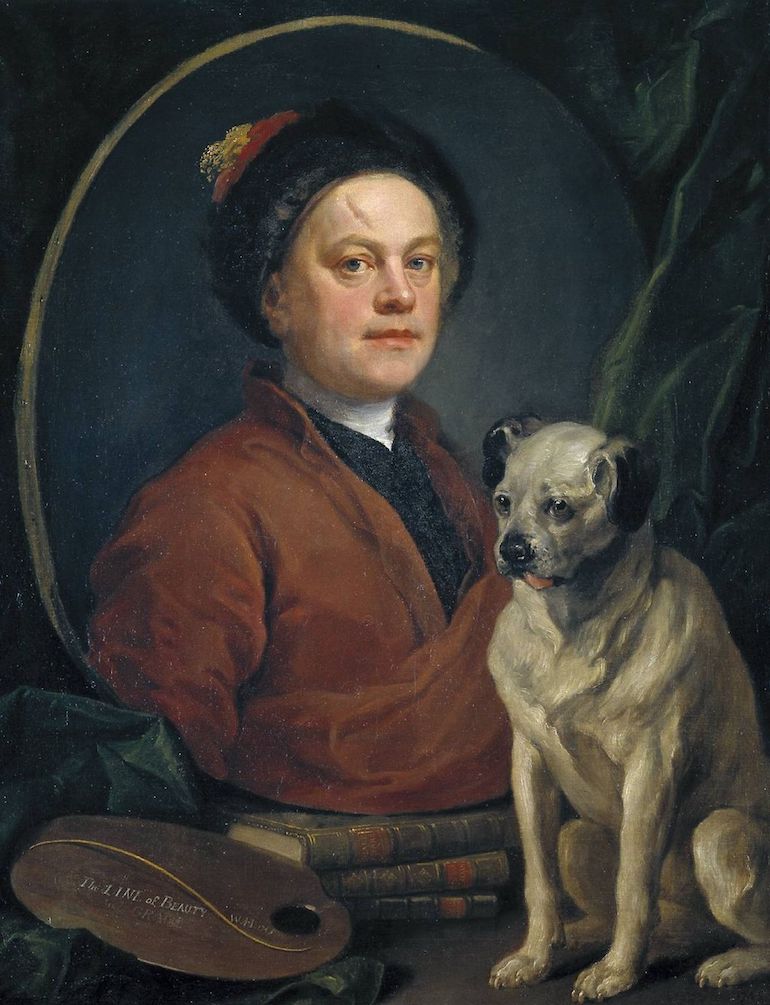 Tate Britian: The Painter and His Pug by William Hogarth. Photo Credit: © Public Domain via Wikimedia Commons.
Tate Britian: The Painter and His Pug by William Hogarth. Photo Credit: © Public Domain via Wikimedia Commons.
4. Domhnall – the Irish Wolfhound with a fondness for Guinness
The Changing of the Guard at Buckingham Palace is a must-see event for many visitors to London with many excited to catch a glance of the famous foot guards of the Household Division donning their black bearskins and scarlet tunics, but from time to time the show is stolen by an attraction of the four-legged variety. If you happen to see the Irish Guards performing the Changing of the Guard ceremony it is very likely that you’ll see their regimental mascot, 6-year-old Domhnall, the Irish Wolfhound whom, it is said, is rather partial to a bit of Guinness. The Irish Guards are unique, among the 5-foot guard regiments that traditionally provide the Queen’s Guard at the Royal Palaces in having a mascot although other regiments in the British military also have one, such as the Royal Welsh Guards who have a goat!
The Irish Guards’ tradition of having a regimental mascot goes back to 1902 when the Irish Wolfhound Club of Northern Ireland gifted the regiment their very first Irish Wolfhound. Domhnall, who has his own Twitter account albeit a dormant one, and whose name means ‘world leader’ in Gaelic, is the regiments’ 16th mascot and was a gift to the Irish Guards by the Irish Wolfhound Club of Ireland during the Queen’s visit to Ireland in 2011.
Today, Domhnall is as tame as they come but according to his handler, Drummer David Steed, when he was a pup, training proved a little hard work for both of them, with the playful pooch having a bit of a penchant for chasing down cyclists! After a period of training that involved getting him used to horses and the sights and sounds of London, the days of chasing cyclists seem to be behind him and the well-loved animal has grown into the role of the Irish Guards’ mascot, taking the lead at a whole host of ceremonies including the spectacle of Trooping the Colour (Queen’s Birthday Parade) every June.
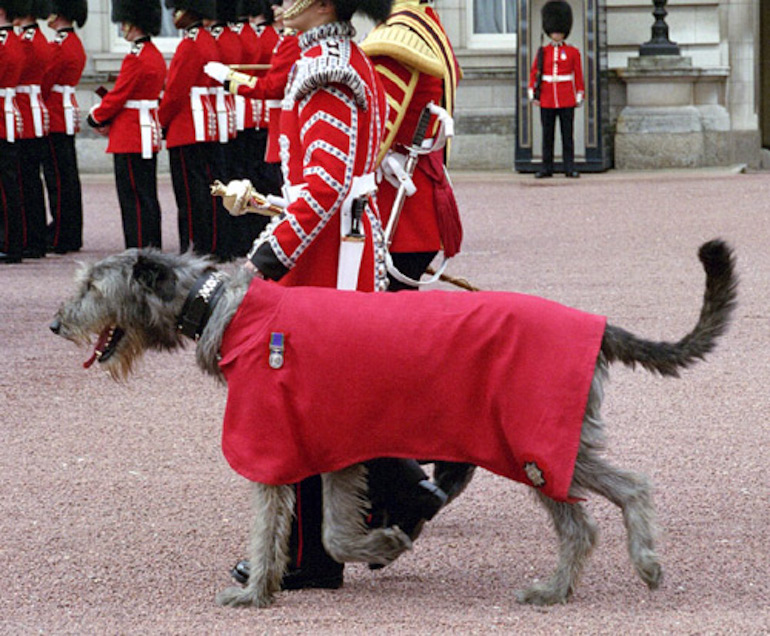 Irish Guards Irish Wolfhound Mascot. Photo Credit: © Elf via Wikimedia Commons.
Irish Guards Irish Wolfhound Mascot. Photo Credit: © Elf via Wikimedia Commons.
5. Black Dog of Newgate
The scariest dog of London folklore makes it to number 5 on my list. The ghoulish tale of the Black Dog of Newgate has origins going back all the way to the 1200s during the reign of Henry III. Legend has it that following a terrible famine at the infamous Newgate Prison in the City of London, desperate inmates turned to cannibalism and one day set upon a newly admitted prisoner and ate him alive. A bad move it seems, as it just so happened that the hapless prisoner was a scholar of sorcery and the supernatural.
In retribution, evil spirits sent the terrifying spectre of a black dog with eyes that burned like fire and jowls that dripped with blood to haunt and torment all those who dwelled at the miserable institution for all eternity. Upon arrival, the spectral hound set about ripping the cannibalistic perpetrators to pieces, limb from limb, picking them off one by one.
It is said that once revenge had been exacted, the foul-smelling beast remained in the prison’s dungeons only to reappear as an omen of death, the night before the execution of a condemned felon. The prison was demolished in 1904 and on the same site was built Central Criminal Court commonly called the Old Bailey, at the back of which people still occasionally report the sighting of a black dog sliding along the tops of the walls.
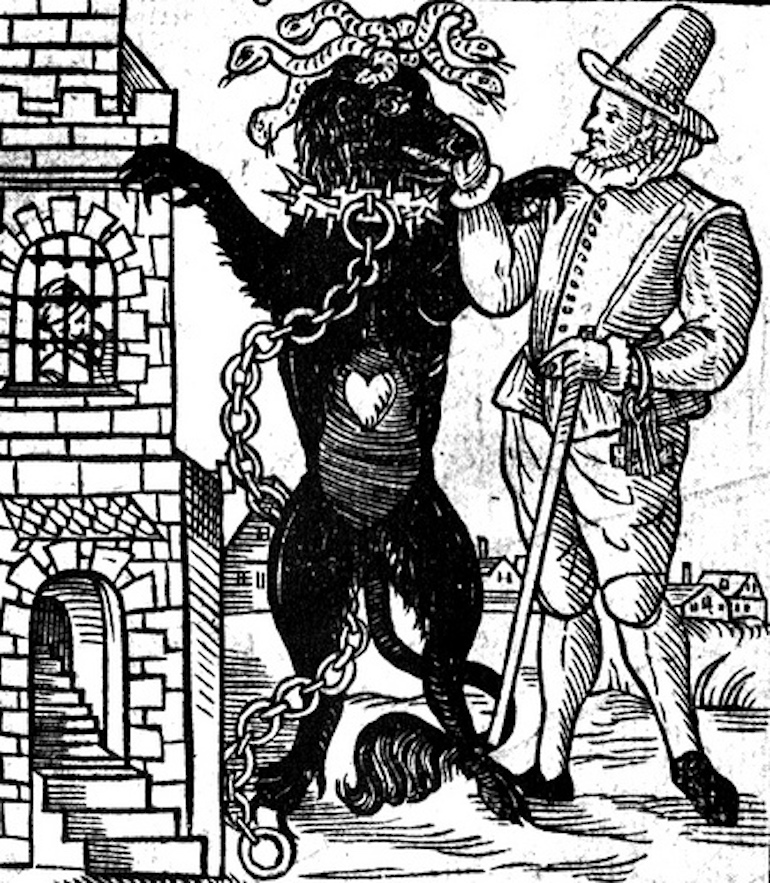 The Black Dog of Newgate. Photo Credit: © Public Domain via Wikimedia Commons.
The Black Dog of Newgate. Photo Credit: © Public Domain via Wikimedia Commons.
6. 101 Dalmations
London’s most well-known fictional dogs. Whether you are a fan of the original novel, the animated films, or the live-action films, fans of the franchise are in for a treat in London as this city is full of places that have featured in the many stories. One of the best places to head to is the beautiful The Regent’s Park which is close by to the Dalmatians’ actual home and where Pongo and Per-dita first met whilst their owners Roger and Anita walked with them through Queen Mary’s Rose Garden.
In the live-action films, wicked Cruella’s fashion house, the House of DeVil is based in London with the Neo-gothic Minster Court building in the City of London being used for its external appearance. And in the sequel 102 Dalmatians, the ‘Second Chance Dog Home’ is based on London’s leading real-life animal sanctuary Battersea Dogs & Cats Home.
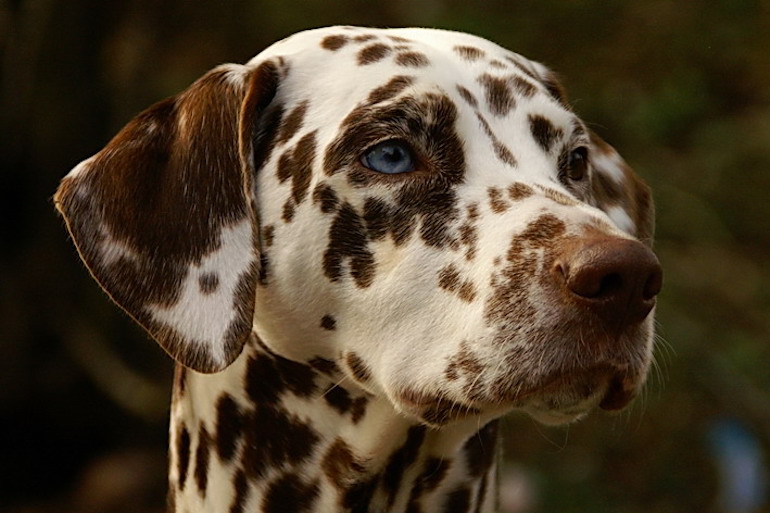 Blue Eye Dalmatian. Photo Credit: © Public Domain via Wikimedia Commons.
Blue Eye Dalmatian. Photo Credit: © Public Domain via Wikimedia Commons.
There are dozens more London canines that could have made this list. Honourable mentions include Roof Dog – the mascot of The Windmill Pub in Brixton, Dash – the first and most loved dog of a young Princess Victoria whilst she lived at Kensington Palace, and lastly an American beagle called Guy who has recently joined Ms. Meghan Markle at her new home, Nottingham Cottage, also at Kensington Palace.
Blue Badge Tourist Guides love London and have a finger on the pulse of all the city’s latest goings-on! So for the most up-to-date and entertaining information, be that when spotting Domhnall during the Changing of the Guard, meeting Trump the pug on a Tour of Tate Britain, or seeing where Pongo bumped noses with Perdita on a London Royal Parks Tour, we’ve got it covered.



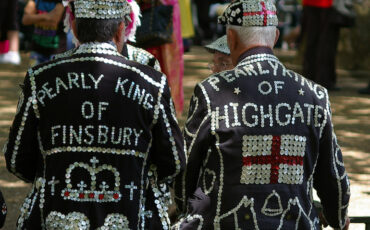
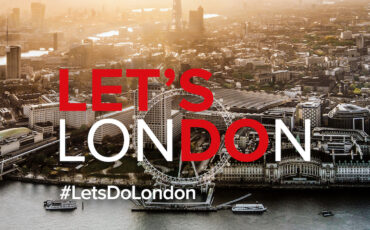


Leave a Reply